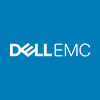
The Zoom Zoom Box: Introducing the New Four-Socket PowerEdge Servers
|
According to the 2016 World Economic Forum report, the following jobs did not exist in 2006:
It is no stretch to say that these jobs are the result of a massive jump in the production, curation and consumption of data. A large digital ecosystem is continuously expanding to support these trends. Large multi-billion dollar industries have sprung up in this digital era and are, perhaps, irrevocably changing how we interact with the real world. Enterprises, big and small, are having to deal with a digital overload within (and without) their businesses. While they always had traditional IT infrastructure to support traditional financial, CRM or Logistics applications, they are quickly getting overwhelmed with the deluge of data. There is a huge computational capability issue. Take, for example, retailers who are striving determine:
Retailers are employing sophisticated machine-learning approaches to answer some of these thorny questions. These retailers not only need a vast, interconnected system but also need a secure, powerful IT infrastructure that has the computational horsepower and efficiency to employ machine learning algorithms to provide these insights. More and more of the functional processes in large enterprises are undergoing digitization. This results in higher volume of data coming into the traditional systems at a higher velocity. Just being able to manage large data is no longer sufficient. It is about using all that data to answer questions that deliver insights into business operations, customer preferences or marketing opportunities. It is about performing insightful data analytics faster. Emerging workloads such as machine learning or data analytics require high computational capability combined with large capacity. This combination helps drive consistent but rapid results. However, traditional IT systems are struggling just to keep up, let alone deliver insights in an adequate amount of time. Business leaders are increasingly frustrated with these traditional systems that are not scalable with current business demands. Enter the “Zoom Zoom” box.Dell EMC has been working with customers for many years to help solve their pressing IT challenges and improve business outcomes. As enterprises drown in data, Dell EMC has come up with an innovative yet simple approach to this problem – Make faster servers with more capacity. Four sockets. And more accelerators. More zoom zoom! Today, Dell EMC is announcing the availability of two new four-socket servers – the PowerEdge R940xa and PowerEdge R840, part of the 14th generation Dell EMC PowerEdge server portfolio. The servers allow customers to:
With extensive performance density (up to 112 processing cores) and massive memory (up to 6TB of memory and NVDIMM options), these new servers deliver the necessary powerful performance. In fact, the PowerEdge R840 holds the four-socket world record for SAP SD standard benchmark of 65,900 users+. The PowerEdge R940xa lets you accelerate critical workloads with a 1:1 CPU to GPU ratio and up to four double-width GPUs. The R840 offers up to two double-width GPUs in addition to up to 24 NVMe drives for some “serious” speed. Additionally, these servers also support field programmable gate arrays (FPGAs), which excel on data-intensive computations. The R940xa offers up to eight FPGAs while the R840 offers up to two FPGAs, so you can tailor your workload acceleration requirements. Beyond offering accelerated performance and high capacity, both servers feature OpenManage Enterprise to monitor and manage the IT infrastructure. An agent-free Integrated Dell Remote Access Controller (iDRAC) provides automated, efficient management to improve productivity. Additionally, Dell EMC PowerEdge’s Integrated Security features such as the Cyber Resilient Architecture come standard within every server. See how Richard Heyns, CEO of Brytlyt looks at these complex computational challenges and how his company is using PowerEdge R940xa to provide better business outcomes faster. Learn more about the complete PowerEdge portfolio at dellemc.com/Servers. Join the conversation at @DellEMCservers. + Results of the Dell EMC PowerEdge R840 on the two-tier SAP SD standard application benchmark 65,900 Users; SAP benchmark with enhancement package 5 for SAP ERP 6.0, SAP ASE 16; SLES12SP3: with Intel Xeon Platinum 8180M CPUs (4 CPUs, 112 cores and 224 threads) and 1536GB of memory. Certification number: 20180xx. Results as of April 2018. For more details see http://sap.com/benchmarks
|
|
![]()
Source: Dell Blog
—

